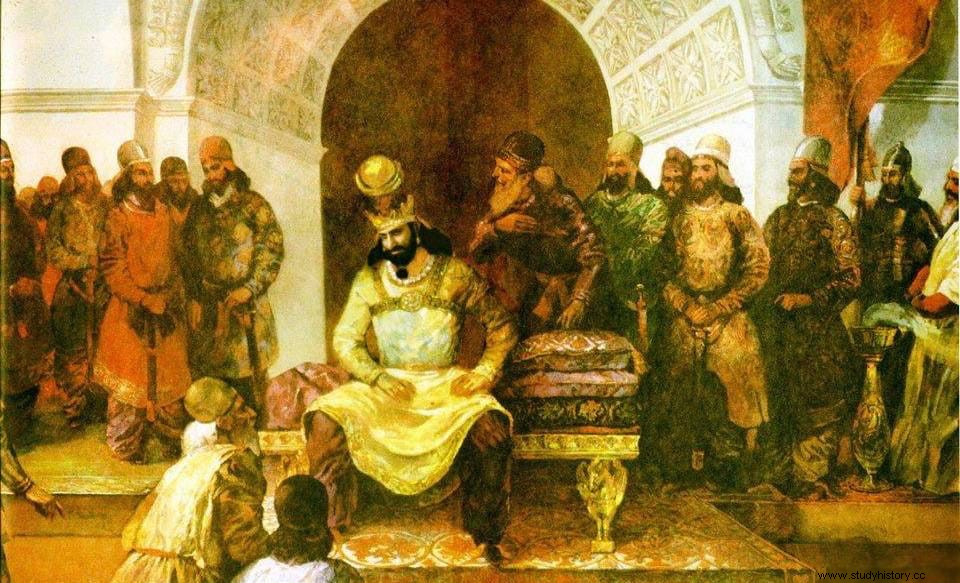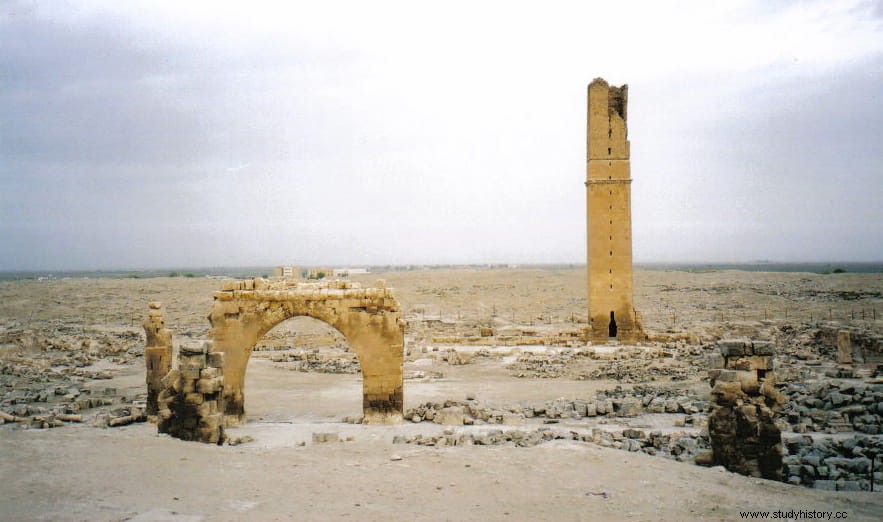In the year 458 AD Constantinople had been the capital of the Eastern Roman Empire for some 63 years. Emperor Leo I ruled, who had ascended the throne the previous year becoming the first to be crowned by the Christian Patriarch of the city. A boy was also born in the city of Damascus (present-day Syria) whose real name we do not know.
We know him as Damascio, the name by which he went down in history and which denotes his place of origin. We also do not know much about his early life, except that he very soon became interested in letters and as a very young man he was sent to Alexandria, which at that time was the main cultural center of the Mediterranean. There he spent twelve years instructing himself in the art of rhetoric with Horapolo.
He then studied philosophy with Ammonius and Heliodorus, the sons of the Neoplatonic philosophers Hermias and Edesia (whom Damascius would later describe in his writings as the best and most beautiful of the women of Alexandria , although he had met her when she was old), which introduced him to the Neoplatonism that Hypatia had professed more than half a century before. As is known, she this she died at the hands of a group of exalted Christians, in the context of religious tensions and the decline of paganism. However, the philosophical school of Alexandria survived.

However, the main Neoplatonic center was still Athens. The school founded by Plato in the gardens of Academus (hence the name Academy), about 1 kilometer northwest of Athens out of the Dipylon (double) gate in the wall and on the way to Eleusis, had been destroyed in the year 86 BC by the Roman general Sulla. But almost five centuries later, in the year 410 AD. a group of philosophers with Plutarch of Athens at the head started it up again, although in a different place.
Damascius went to Athens to study with Isidore of Alexandria, who at that time was the director of the Academy. The school was divided between two opposing currents and, therefore, Isidoro did not last long in office. He resigned in favor of his opponent Hegias and went back to Alexandria, where he would end his days in 520 A.D.
At the request of Teodora de Emesa, who was also a student of Isidoro, Damascio wrote the biography of his teacher:

In it he does not leave Hegias in a very good place, accusing him of prioritizing religious questions over philosophical ones:
In any case, Damascio succeeded Hegias as head of the school in the year 515 AD. What Damascius did not know at the time was that he was going to be the last philosopher to lead the Academy. Because 14 years later, in 529 AD, Emperor Justinian banned all pagan activity (including philosophical) in Athens, putting an end to the Neoplatonic Academy school. Some researchers, such as Polymnia Athanassiadi, believe that the measures taken by Justianiano have a direct relationship with the renewal and flourishing experienced by the school under Damascius.

At that time there were only a handful of philosophers left in the Academy, who decided to leave the city and go into exile in the court of the Persian king Chosroes I in the city of Ctesiphon, where they hoped to find the protection and support they did not have in the Roman Empire of east, given the reputation of just and tolerant ruler of Chosroes. Carrying with them precious scrolls of literature and philosophy, and to a lesser degree of science Damascius himself and his disciples Isidore of Gaza, Simplicio, Hermias the Phoenician, Prisciano Lido, Eulamio de Frigia and Diogenes the Phoenician took the road. There is no evidence in any source that Teodora accompanied them.
This moment, which represents the final and definitive disappearance of the Neoplatonic school and the Academy of Athens, symbolizes for many historians the end of pagan Antiquity and the final triumph of Christianity.

But after about three years in Ctesiphon the philosophers realized that Khosrow's reign had little to do with the Platonic ideal of him. Luckily for them in the year 532 Justinian and Chosroes signed a peace treaty, and the Persian king himself had included in it a clause referring to the exiled philosophers. By that clause Justinian was obliged to welcome them back in Athens or in the city they wanted, and to respect his opinions and ideas, living freely the rest of his days.
This clause constitutes one of the first known documents in favor of religious freedom, since it implied not only that philosophers could continue to develop and publicly communicate their ideas, but also that they could continue to be pagans.

However, the philosophers never returned, or at least did not finish their journey to Athens or Constantinople. It is believed that they remained somewhere between the two empires, or that they simply disintegrated and each one went their own way. One hypothesis, supported by Tardieu and Athanassiadi among others, says that they may have settled in Carrhae (the current archaeological site of Harran in southeastern Turkey), a city that at that time was right on the border between the Sassanian and Byzantine empires.
What is known is that Damascius returned to his native Syria, where he died after 538 AD. But the rest were able to keep the school alive at Carrhae, at least until the Gundishapur Academy, the main center of learning in Sassanid Persia until the 8th century, took over. Through her, it is possible that Neoplatonism resurfaced in Baghdad in 832 with the founding of the House of Wisdom, the famous translation center and library of the Abbasid caliphate.
Fonts
Gerald Bechtle , Review of Rainer Thiel, ‘Simplikios und das Ende der neuplatonischen Schule in Athen’ | Sweat On Line | D'Ancona, C. (2002).Review of Damascius. The Philosophical History, by P. Athanassiadi . Mnemosyne, 55(2), 251–257. jstor.org/stable/4433329 | Polymnia Athanassiadi . (1993). Persecution and Response in Late Paganism:The Evidence of Damascius . The Journal of Hellenic Studies, 113, 1–29. doi.org/10.2307/632395 | Damascius (Encyclopædia Britannica) | Damascio , Problems and Solutions Concerning First Principles | Edward J. Watts , City and School in Late Antique Athens and Alexandria | Wikipedia
